SHRC Registration Actions Taken in 2025
The nominations below were reviewed by the State Historical Resources Commission during the year 2025. Scroll down to view subsequent actions by quarter. New actions are added to the end of this page after each quarterly State Historical Resources Commission meeting. Agendas from past meetings are downloadable in PDF format below on the right sidebar.
February 7, 2025 SHRC Meeting
Properties nominated to the National Register of Historic Places
Fisk’s Mill Landing Historical and Archaeological District encompasses 398 acres along the Sonoma County coast within Salt Point State Park and adjacent waters within Stewarts Point State Marine Reserve and Greater Farallones National Marine Sanctuary. Contributing sites include both archaeological remains and remnants of collapsed buildings all associated with the use of Fisk’s Mill as a doghole port, an individual landing within an interrelated network of several coastal enterprises within Sonoma and Mendocino Counties. Resources associated with the transportation network represent an established center of business and local community necessary for the doghole port’s success and longevity.
 Bob Hope Patriotic Hall, designed in the Italian Renaissance Revival style, is located in south Los Angeles where the west-facing ten-story building stands out amidst its low-rise surroundings. From its inception, Patriotic Hall has been a dynamic and supportive venue for approximately 200 veterans’ organizations since the building was completed in 1926. Owned by the County of Los Angeles and designed by Allied Architects Association of Los Angeles, the building was first championed by Civil War veterans. Historically known as Patriotic Hall, in 2004, the building was renamed “Bob Hope Patriotic Hall” to recognize the honorary veteran’s fifty years of service in entertaining the troops.
Bob Hope Patriotic Hall, designed in the Italian Renaissance Revival style, is located in south Los Angeles where the west-facing ten-story building stands out amidst its low-rise surroundings. From its inception, Patriotic Hall has been a dynamic and supportive venue for approximately 200 veterans’ organizations since the building was completed in 1926. Owned by the County of Los Angeles and designed by Allied Architects Association of Los Angeles, the building was first championed by Civil War veterans. Historically known as Patriotic Hall, in 2004, the building was renamed “Bob Hope Patriotic Hall” to recognize the honorary veteran’s fifty years of service in entertaining the troops.
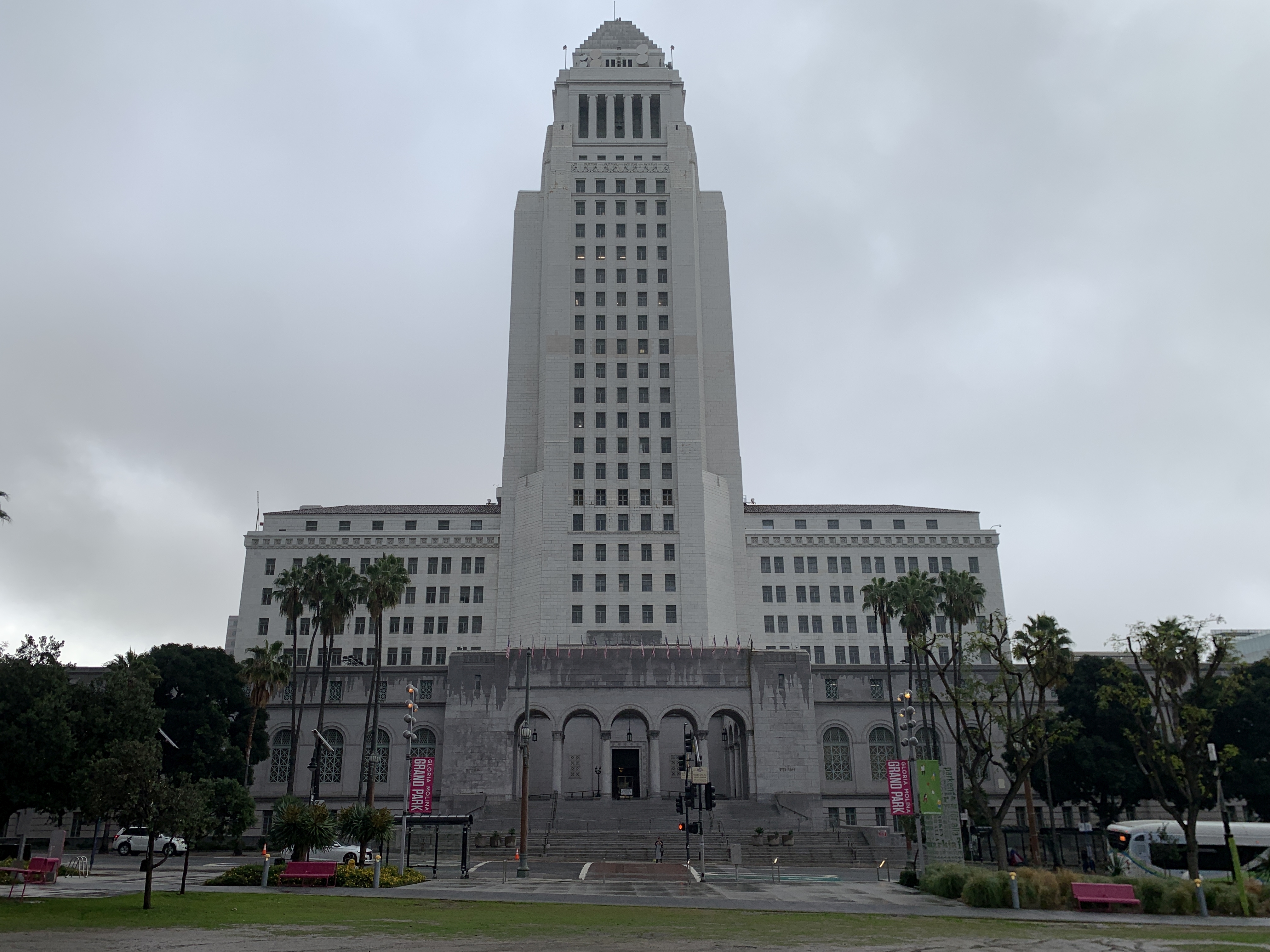 Los Angeles City Hall, completed in 1928, is a thirty-two-story municipal building, eclectic in its architecture and monumental in scale, composed of three distinct masses totaling approximately 856,000 square feet. In a modern interpretation of the Mausoleum at Halicarnassus, one of the Seven Wonders of the Ancient World, the soaring central tower volume ascends to a ceremonial room with exterior observation deck, all capped by a pyramidal stepped roof. Incorporating elements of Art Deco, Neoclassical Revival, Mediterranean Revival, and other idioms into a new modern style, City Hall was a major inspiration for other civic and institutional buildings across the country, as well as the PWA Moderne style that dominated American institutional design during the 1930s.
Los Angeles City Hall, completed in 1928, is a thirty-two-story municipal building, eclectic in its architecture and monumental in scale, composed of three distinct masses totaling approximately 856,000 square feet. In a modern interpretation of the Mausoleum at Halicarnassus, one of the Seven Wonders of the Ancient World, the soaring central tower volume ascends to a ceremonial room with exterior observation deck, all capped by a pyramidal stepped roof. Incorporating elements of Art Deco, Neoclassical Revival, Mediterranean Revival, and other idioms into a new modern style, City Hall was a major inspiration for other civic and institutional buildings across the country, as well as the PWA Moderne style that dominated American institutional design during the 1930s.
 Nursery School for Visually Handicapped Children, in the East Hollywood area of Los Angeles, has a two-story Mid-Century Modern main building designed by master architect Paul R. Williams. The school was founded in 1938 by members of the Delta Gamma Fraternity of Women, which adopted aid to the blind as their primary mission. The main building, one of the very few schools designed by Williams, was constructed as the permanent home of the Nursery School in 1951 and represents his custom of donating or reducing his fee for projects that intersected with his social beliefs. In 1965, the school’s name changed to the Blind Children’s Center.
Nursery School for Visually Handicapped Children, in the East Hollywood area of Los Angeles, has a two-story Mid-Century Modern main building designed by master architect Paul R. Williams. The school was founded in 1938 by members of the Delta Gamma Fraternity of Women, which adopted aid to the blind as their primary mission. The main building, one of the very few schools designed by Williams, was constructed as the permanent home of the Nursery School in 1951 and represents his custom of donating or reducing his fee for projects that intersected with his social beliefs. In 1965, the school’s name changed to the Blind Children’s Center.
 Sandcliff, a midcentury modern garden apartment condominium complex constructed in phases from 1960 to 1964, is located in south Palm Springs. Fourteen one-story multi-family buildings—two duplexes and twelve pinwheel-shaped triplexes—encompass forty residential units. The property represents a pivotal period of midcentury community planning in the city when residential development began moving away from primarily single-family residential living of the wealthy to embrace multi-family development and innovative building types that catered to a growing middle and upper middle-class population of homebuyers. Condominiums placed the allure of the Palm Springs leisure lifestyle within economic reach.
Sandcliff, a midcentury modern garden apartment condominium complex constructed in phases from 1960 to 1964, is located in south Palm Springs. Fourteen one-story multi-family buildings—two duplexes and twelve pinwheel-shaped triplexes—encompass forty residential units. The property represents a pivotal period of midcentury community planning in the city when residential development began moving away from primarily single-family residential living of the wealthy to embrace multi-family development and innovative building types that catered to a growing middle and upper middle-class population of homebuyers. Condominiums placed the allure of the Palm Springs leisure lifestyle within economic reach.
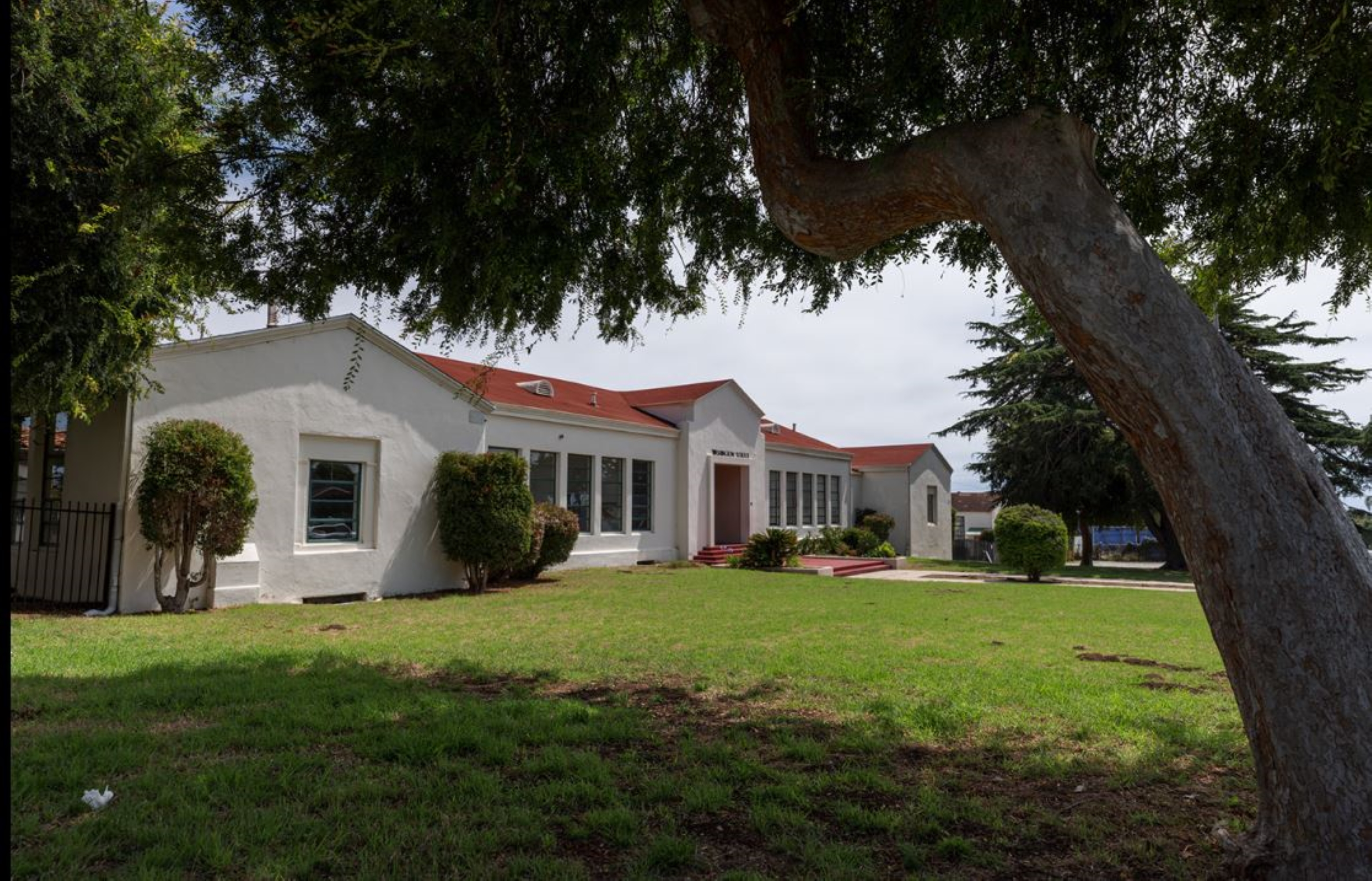
Alf's Blacksmith Shop is a one-story, rectangular timber light industrial building constructed in 1890, located in Daggett, San Bernardino County. The property is associated with borax mining in the Mojave Desert, and the working life of prominent local entrepreneur and businessman Seymore Alf.
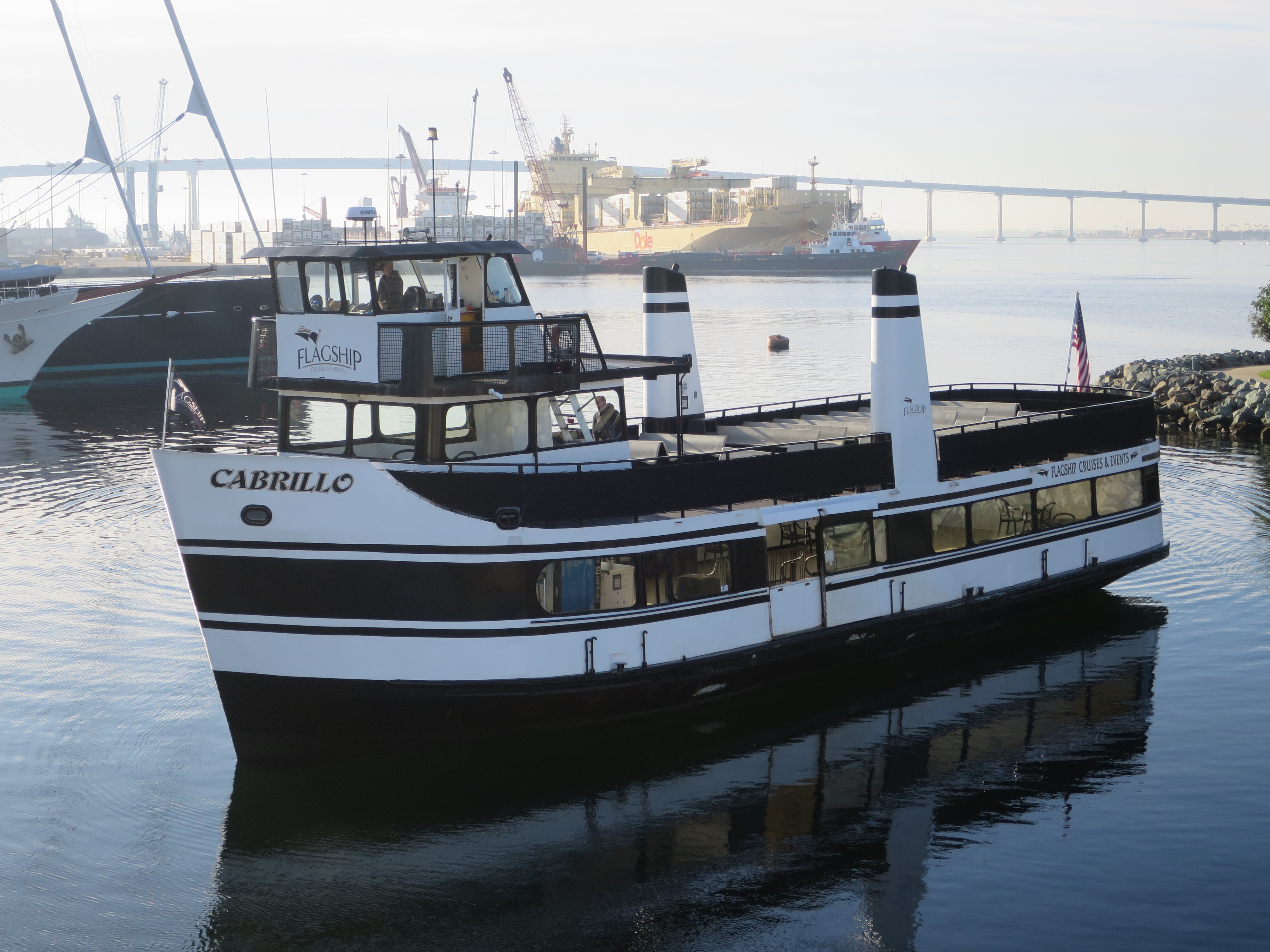 Cabrillo Ferry is a ferryboat designed in 1965 by prominent maritime figure Oakley J. Hall, owner of San Diego Maritime Construction and the Star & Crescent Boat Company, where the Cabrillo was built and operated as a San Diego ferryboat. The boat was the only craft personally designed by Hall, who took a personal interest in the craft, including ordering its lengthening by 20 feet shortly before his death in 1968.
Cabrillo Ferry is a ferryboat designed in 1965 by prominent maritime figure Oakley J. Hall, owner of San Diego Maritime Construction and the Star & Crescent Boat Company, where the Cabrillo was built and operated as a San Diego ferryboat. The boat was the only craft personally designed by Hall, who took a personal interest in the craft, including ordering its lengthening by 20 feet shortly before his death in 1968.
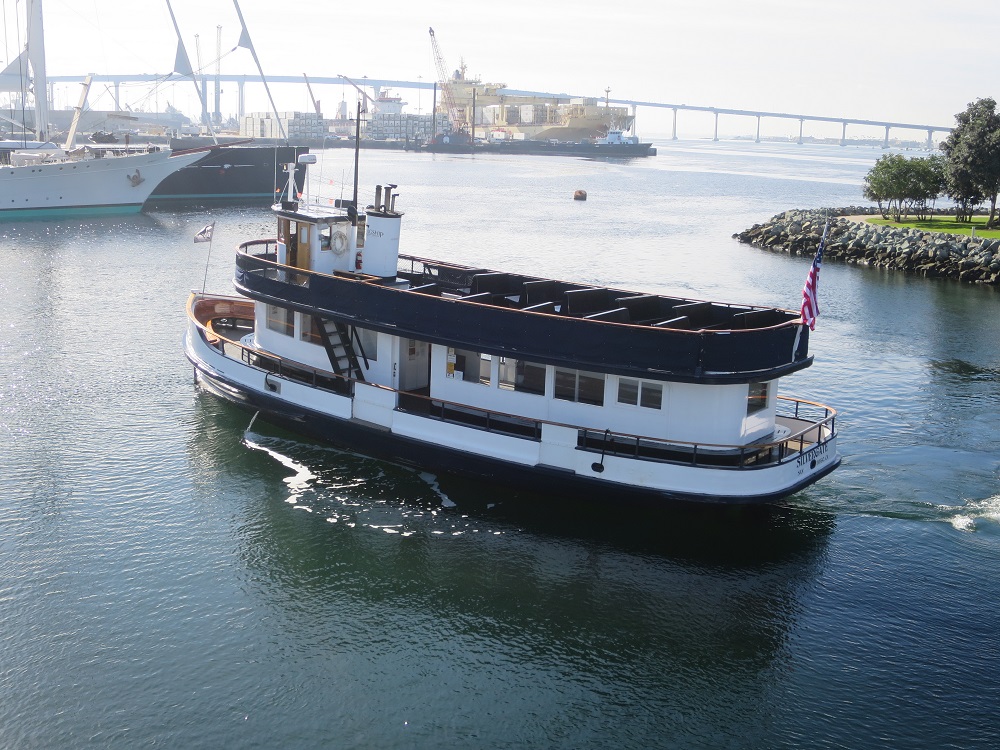 Silvergate Ferry is a ferryboat built in 1940 by the San Diego Marine Construction Company for the Star & Crescent Boat Company, which provided ferry service between San Diego and Naval Air Station North Island until 1945, then as a recreational excursion craft.
Silvergate Ferry is a ferryboat built in 1940 by the San Diego Marine Construction Company for the Star & Crescent Boat Company, which provided ferry service between San Diego and Naval Air Station North Island until 1945, then as a recreational excursion craft.

Properties nominated to the California Register of Historical Resources
 Armenian Genocide Martyrs Monument is a tower over 60 feet high with elevated base, located in Montebello, dedicated to the memory of the victims of the 1915 Armenian Genocide, completed in 1968. The monument was designed by H. Hrant Agbabian.
Armenian Genocide Martyrs Monument is a tower over 60 feet high with elevated base, located in Montebello, dedicated to the memory of the victims of the 1915 Armenian Genocide, completed in 1968. The monument was designed by H. Hrant Agbabian.
May 9, 2025 SHRC Meeting
Properties nominated to the National Register of Historic Places

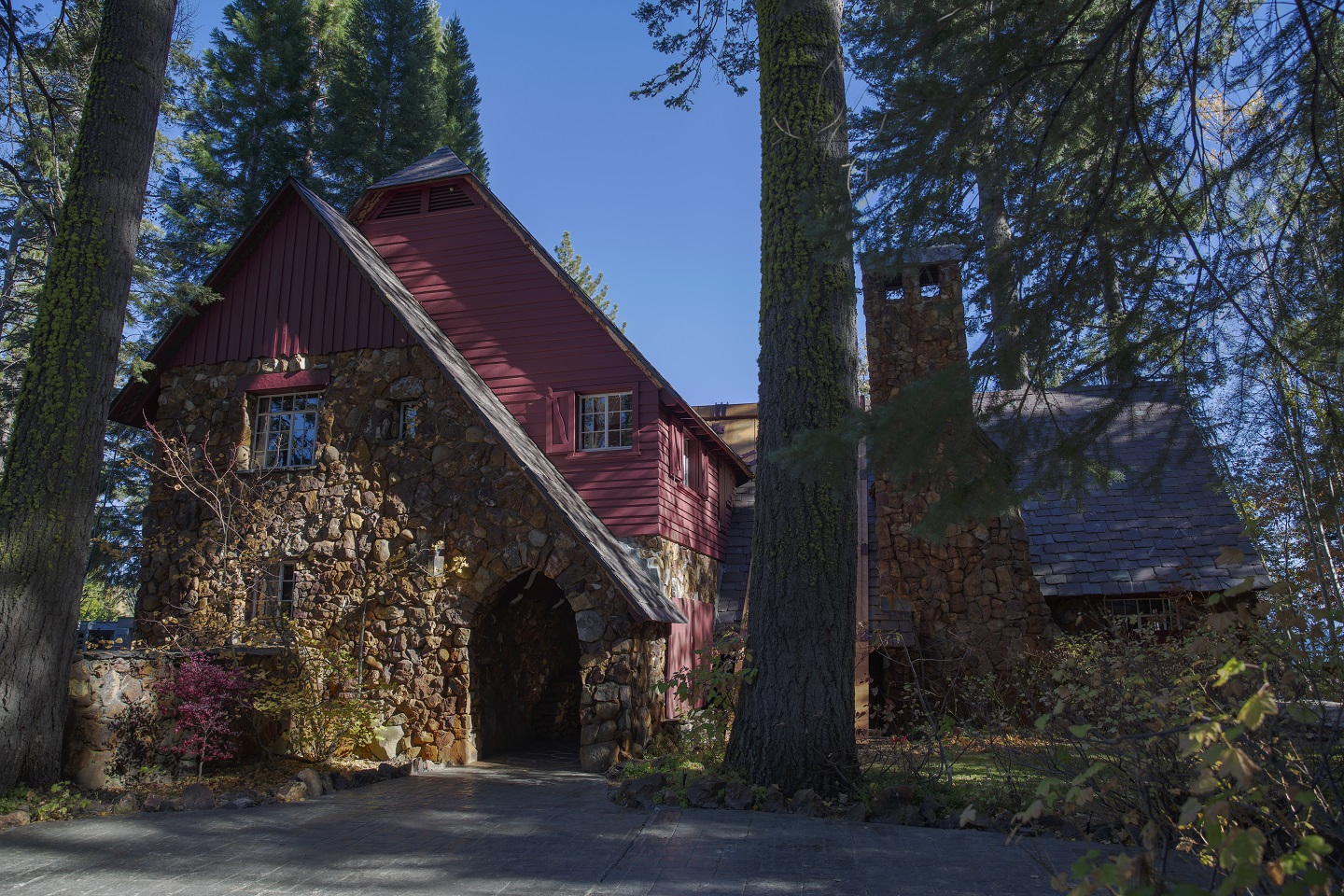 Westphal House is a 1930 summer residence built for Laura Russ Westphal, located near Lake Tahoe in Placer County. The building was designed by Thomas J. Kent Jr. and Andrew T. Hass of San Francisco in the Tudor Revival style, with design features specific to the Lake Tahoe region, to facilitate its use as a summer vacation residence.
Westphal House is a 1930 summer residence built for Laura Russ Westphal, located near Lake Tahoe in Placer County. The building was designed by Thomas J. Kent Jr. and Andrew T. Hass of San Francisco in the Tudor Revival style, with design features specific to the Lake Tahoe region, to facilitate its use as a summer vacation residence.
 Coloma Community Hall is a 1926 social hall constructed for the Coloma Grange, also known as Gold Trail Grange #452 Hall. The property is significant as a clubhouse and community hall in Coloma. In addition to the building itself, one contributing feature is a carronade, manufactured between 1790 and 1820, which, according to accounts documented by the Grange, was purchased by John Sutter from Fort Ross in 1841, and subsequently installed in Sutter's Fort.
Coloma Community Hall is a 1926 social hall constructed for the Coloma Grange, also known as Gold Trail Grange #452 Hall. The property is significant as a clubhouse and community hall in Coloma. In addition to the building itself, one contributing feature is a carronade, manufactured between 1790 and 1820, which, according to accounts documented by the Grange, was purchased by John Sutter from Fort Ross in 1841, and subsequently installed in Sutter's Fort.
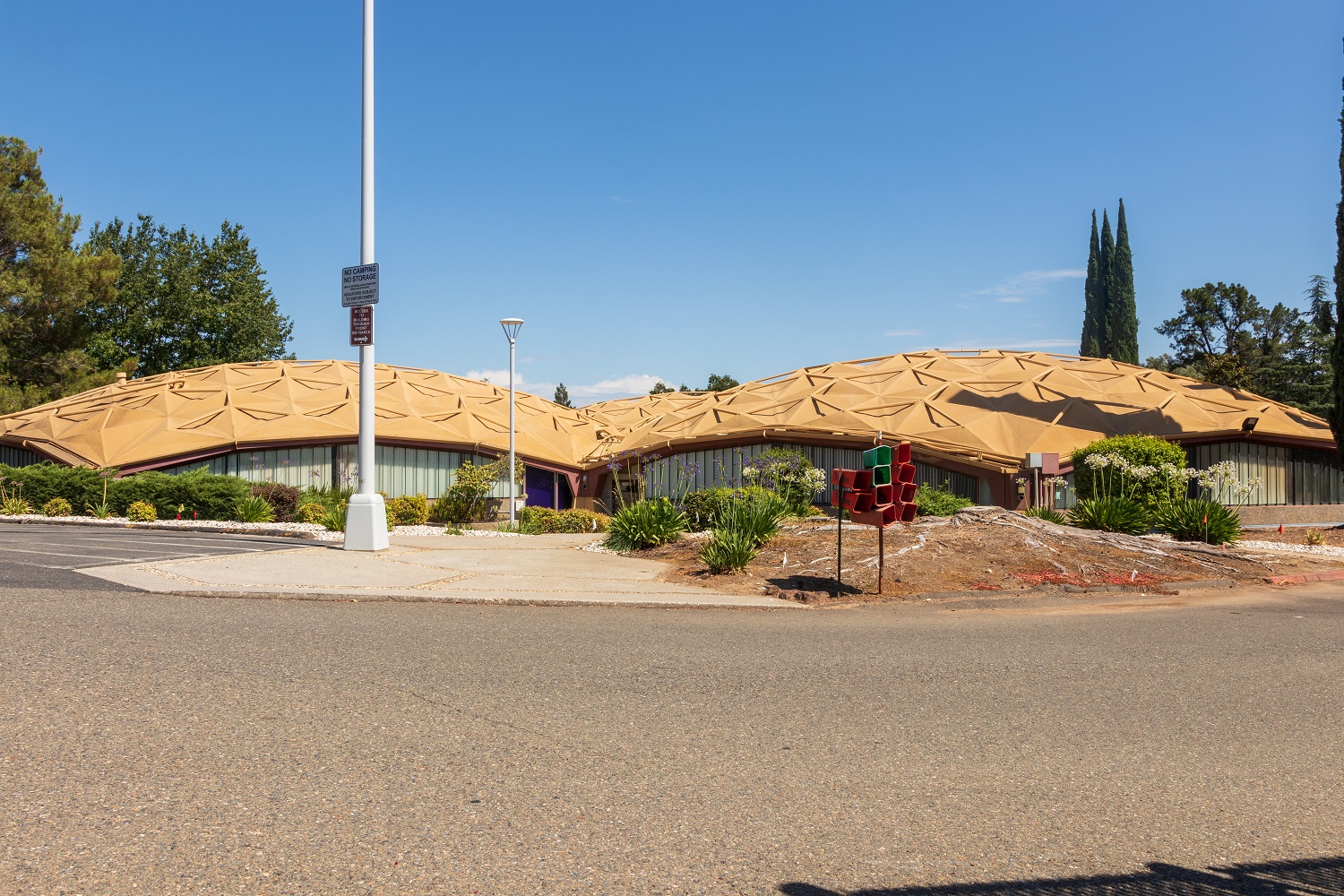 Placer County Administrative Center is a complex of five hexagonal geodesic domes located in Auburn, Placer County, constructed in 1966. Designed by Robert B. Liles, the design of the building was inspired by the work of Richard Buckminster "Bucky" Fuller, to whom Liles worked as an assistant.
Placer County Administrative Center is a complex of five hexagonal geodesic domes located in Auburn, Placer County, constructed in 1966. Designed by Robert B. Liles, the design of the building was inspired by the work of Richard Buckminster "Bucky" Fuller, to whom Liles worked as an assistant.
 Frankel, Morris S. and Nadine E., House embodies the distinctive characteristics of the Modern Movement, a rare and extremely intact example of a Mid-Century Modern house by architects Rochlin & Baran. Constructed in 1961, the one-story, Y-shaped, steel and wood-framed house occupies an irregularly shaped flat parcel in a hillside residential neighborhood in the Brentwood community of Los Angeles. Based on an elongated hexagon, the Frankel House plan was influenced by Frank Lloyd Wright’s hexagonal Usonian designs. Commissioned by Dr. Morris S. Frankel, DDS and Nadine E. Frankel, the house did not change ownership until 1997 and has had no alterations since its construction.
Frankel, Morris S. and Nadine E., House embodies the distinctive characteristics of the Modern Movement, a rare and extremely intact example of a Mid-Century Modern house by architects Rochlin & Baran. Constructed in 1961, the one-story, Y-shaped, steel and wood-framed house occupies an irregularly shaped flat parcel in a hillside residential neighborhood in the Brentwood community of Los Angeles. Based on an elongated hexagon, the Frankel House plan was influenced by Frank Lloyd Wright’s hexagonal Usonian designs. Commissioned by Dr. Morris S. Frankel, DDS and Nadine E. Frankel, the house did not change ownership until 1997 and has had no alterations since its construction.
.jpeg) North Star House (Additional Documentation) amends the nomination for the two-story Craftsman style house listed on the National Register in 2011. Located on a sloping, wooded site near Grass Valley, the house was designed by Julia Morgan for North Star Mine Superintendent Arthur de Wint Foote and his wife, author and illustrator Mary Hallock Foote. In addition to an expanded discussion of Hallock Foote’s importance and influence, the nomination includes information about Morgan’s association with design and construction of 127 Hostess Houses on military camps during World War I, for which North Star House is perceived as the prototype.
North Star House (Additional Documentation) amends the nomination for the two-story Craftsman style house listed on the National Register in 2011. Located on a sloping, wooded site near Grass Valley, the house was designed by Julia Morgan for North Star Mine Superintendent Arthur de Wint Foote and his wife, author and illustrator Mary Hallock Foote. In addition to an expanded discussion of Hallock Foote’s importance and influence, the nomination includes information about Morgan’s association with design and construction of 127 Hostess Houses on military camps during World War I, for which North Star House is perceived as the prototype.

 University High School Administration Building, the flagship and last remaining original building of a campus that opened in 1924, is two stories with a hip roof and irregular plan, designed in a combination of Late Victorian architectural styles, Romanesque Revival and Renaissance Revival. Located in a residential neighborhood in West Los Angeles, close to multiple colleges and universities, the building reflects the growth of the formerly independent city of Sawtelle and its subsequent consolidation with the City of Los Angeles and the development of the Sawtelle community, including its Japanese American population. As a property associated with Migration and Community Formation, the Administration Building meets the registration requirements of the Asian Americans and Pacific Islanders in California, 1850-1995 Multiple Property Submission.
University High School Administration Building, the flagship and last remaining original building of a campus that opened in 1924, is two stories with a hip roof and irregular plan, designed in a combination of Late Victorian architectural styles, Romanesque Revival and Renaissance Revival. Located in a residential neighborhood in West Los Angeles, close to multiple colleges and universities, the building reflects the growth of the formerly independent city of Sawtelle and its subsequent consolidation with the City of Los Angeles and the development of the Sawtelle community, including its Japanese American population. As a property associated with Migration and Community Formation, the Administration Building meets the registration requirements of the Asian Americans and Pacific Islanders in California, 1850-1995 Multiple Property Submission.
 Wintersburg, a historic district on approximately four and a half acres in Huntington Beach, represents the surviving remnant of the former farming community of Wintersburg historically associated with Japanese settlement in the area in the early twentieth century and after World War II, and meets the registration requirements for Asian Americans and Pacific Islanders in California, 1850-1995, in the context of Migration and Community Formation. Contributing buildings include the Spanish Colonial Revival style Japanese Presbyterian Church of Wintersburg, constructed in 1934, and three buildings associated with the C.M. Furuta farm that previously occupied the property—the Craftsman style Furuta House #1 and adjacent Furuta Barn, both constructed in 1912, and the Minimal Traditional style Furuta House #2, constructed in 1947.
Wintersburg, a historic district on approximately four and a half acres in Huntington Beach, represents the surviving remnant of the former farming community of Wintersburg historically associated with Japanese settlement in the area in the early twentieth century and after World War II, and meets the registration requirements for Asian Americans and Pacific Islanders in California, 1850-1995, in the context of Migration and Community Formation. Contributing buildings include the Spanish Colonial Revival style Japanese Presbyterian Church of Wintersburg, constructed in 1934, and three buildings associated with the C.M. Furuta farm that previously occupied the property—the Craftsman style Furuta House #1 and adjacent Furuta Barn, both constructed in 1912, and the Minimal Traditional style Furuta House #2, constructed in 1947.
August 8, 2025 SHRC Meeting
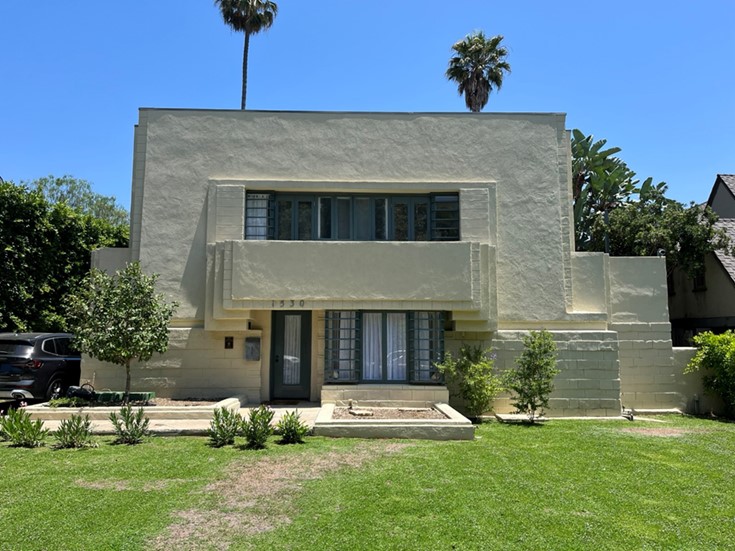 Bollman, Henry O., House is a two-story Mayan Revival style residence constructed in 1923. The fourth house designed by architect Lloyd Wright, the Henry O. Bollman House was one of the first, if not the first, building to utilize the knit-block system he developed, which incorporates steel bars to tie together concrete blocks. Lloyd Wright later collaborated with his father, Frank Lloyd Wright, to further develop this system, which both architects used in later designs.
Bollman, Henry O., House is a two-story Mayan Revival style residence constructed in 1923. The fourth house designed by architect Lloyd Wright, the Henry O. Bollman House was one of the first, if not the first, building to utilize the knit-block system he developed, which incorporates steel bars to tie together concrete blocks. Lloyd Wright later collaborated with his father, Frank Lloyd Wright, to further develop this system, which both architects used in later designs.
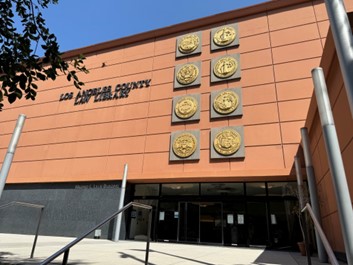 Los Angeles County Law Library is part of a grouping of government buildings organized along a mall that comprise the Los Angeles Civic Center. The Late Moderne style building includes an original portion on the south completed in 1953 and an addition on the north completed in 1971. Founded in 1891, the library is the largest county law library in California. Its foreign and international law collection including rare books, manuscripts, and historical documents sets it apart from other public law libraries in the state. The building is significant as an important work of the architectural firm of Austin, Field & Frye, a firm recognized as a master of modern architecture particularly with regard to Los Angeles government buildings.
Los Angeles County Law Library is part of a grouping of government buildings organized along a mall that comprise the Los Angeles Civic Center. The Late Moderne style building includes an original portion on the south completed in 1953 and an addition on the north completed in 1971. Founded in 1891, the library is the largest county law library in California. Its foreign and international law collection including rare books, manuscripts, and historical documents sets it apart from other public law libraries in the state. The building is significant as an important work of the architectural firm of Austin, Field & Frye, a firm recognized as a master of modern architecture particularly with regard to Los Angeles government buildings.
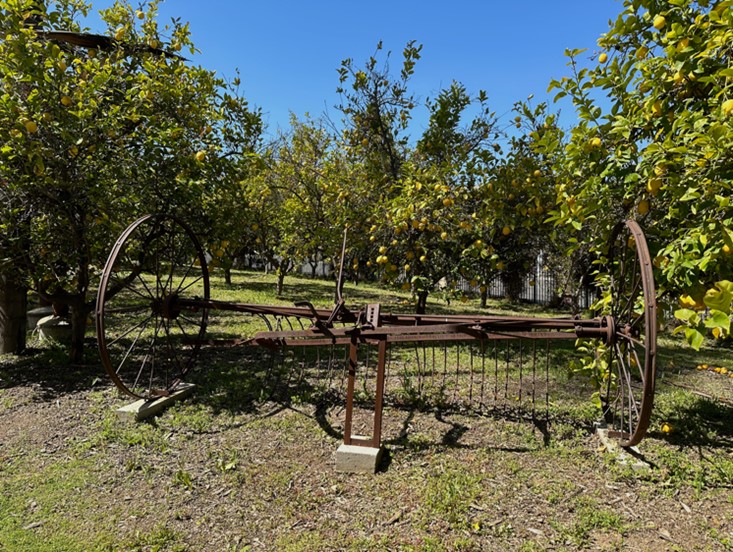 Corona Foothill Ranch is a 4.5-acre remnant of a ranch that originally encompassed 900 acres and later expanded to approximately 2,530 acres. California Ranch Style residential buildings, as well as industrial, utilitarian, and agricultural buildings and structures, were constructed between 1904 and 1966. The property is significant for its association with the early citrus agriculture industry in Riverside County, Corona Foothill Lemon Company founder Samuel Betts Hampton and board member Asa Frank Call, and the company’s impact on the region’s development during the early twentieth century.
Corona Foothill Ranch is a 4.5-acre remnant of a ranch that originally encompassed 900 acres and later expanded to approximately 2,530 acres. California Ranch Style residential buildings, as well as industrial, utilitarian, and agricultural buildings and structures, were constructed between 1904 and 1966. The property is significant for its association with the early citrus agriculture industry in Riverside County, Corona Foothill Lemon Company founder Samuel Betts Hampton and board member Asa Frank Call, and the company’s impact on the region’s development during the early twentieth century.
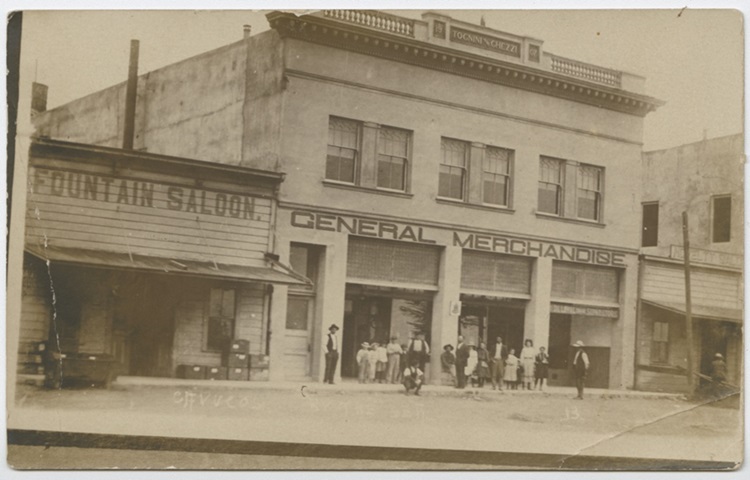 Tognini and Ghezzi Building, a mercantile and general store established by Achille B. Tognini and Carlo Ghezzi, played an important role in the commercial history of Cayucos as the town developed into an important trading center on California’s central coast. Surrounded by other commercial and retail businesses in the heart of Cayucos’ downtown, the well-preserved reinforced concrete early twentieth century Commercial Style building retains its character defining features, including large transoms, recessed storefront entryway, and large interior volume with original mezzanine.
Tognini and Ghezzi Building, a mercantile and general store established by Achille B. Tognini and Carlo Ghezzi, played an important role in the commercial history of Cayucos as the town developed into an important trading center on California’s central coast. Surrounded by other commercial and retail businesses in the heart of Cayucos’ downtown, the well-preserved reinforced concrete early twentieth century Commercial Style building retains its character defining features, including large transoms, recessed storefront entryway, and large interior volume with original mezzanine.
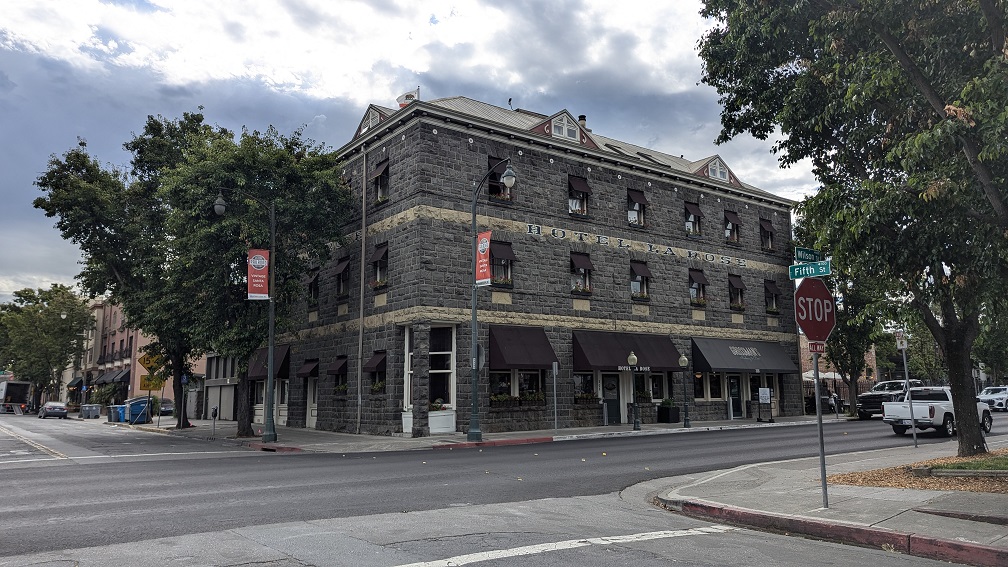 Railroad Square Historic District (Amendment), located in downtown Santa Rosa, updates the existing Railroad Square historic district to reflect changes to the district since its original listing. The district is associated with the development of the San Francisco & North Pacific, North Pacific Coast, and Petaluma & Santa Rosa Railroads, whose presence strongly influenced the growth of Santa Rosa.
Railroad Square Historic District (Amendment), located in downtown Santa Rosa, updates the existing Railroad Square historic district to reflect changes to the district since its original listing. The district is associated with the development of the San Francisco & North Pacific, North Pacific Coast, and Petaluma & Santa Rosa Railroads, whose presence strongly influenced the growth of Santa Rosa.
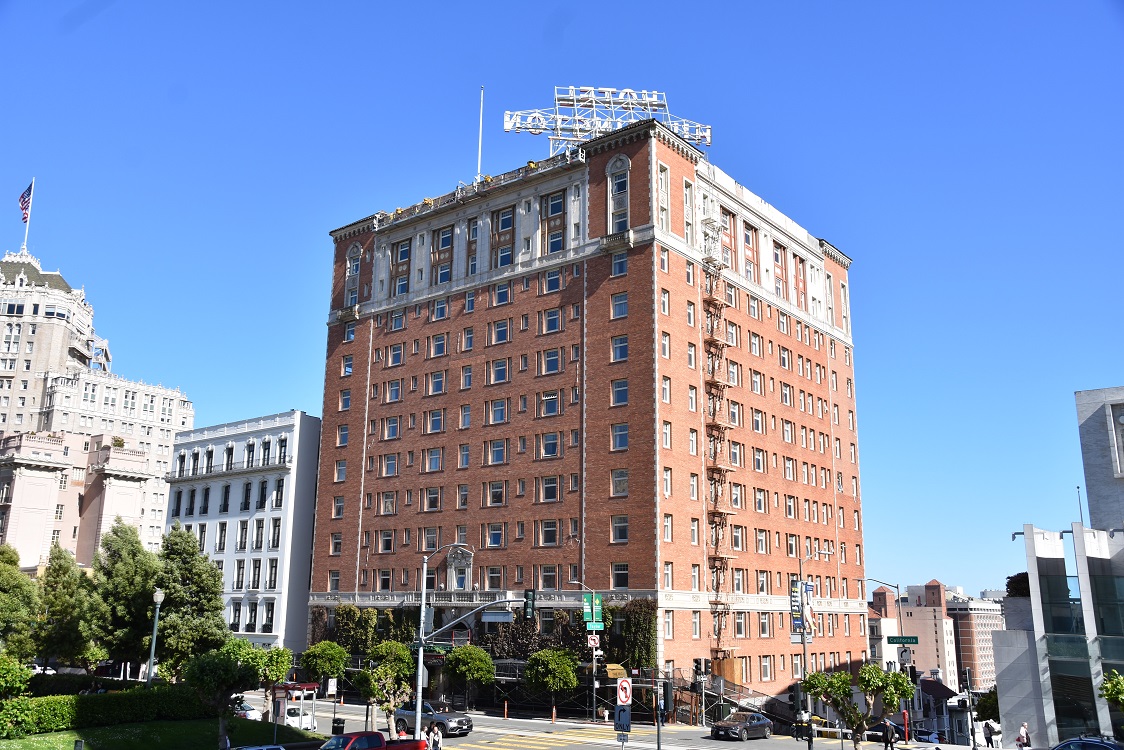 Huntington Hotel, located in San Francisco's Nob Hill neighborhood, is a 12-story Italian Renaissance Revival hotel building, constructed in 1924 and designed by the architecture firm of Weeks & Day. The hotel was originally intended as a furnished apartment hotel, as an example of the "Palace Hotel" style of residential hotels, but its use later evolved to include rooms for travelers.
Huntington Hotel, located in San Francisco's Nob Hill neighborhood, is a 12-story Italian Renaissance Revival hotel building, constructed in 1924 and designed by the architecture firm of Weeks & Day. The hotel was originally intended as a furnished apartment hotel, as an example of the "Palace Hotel" style of residential hotels, but its use later evolved to include rooms for travelers.
Properties nominated as California Points of Historical Interest
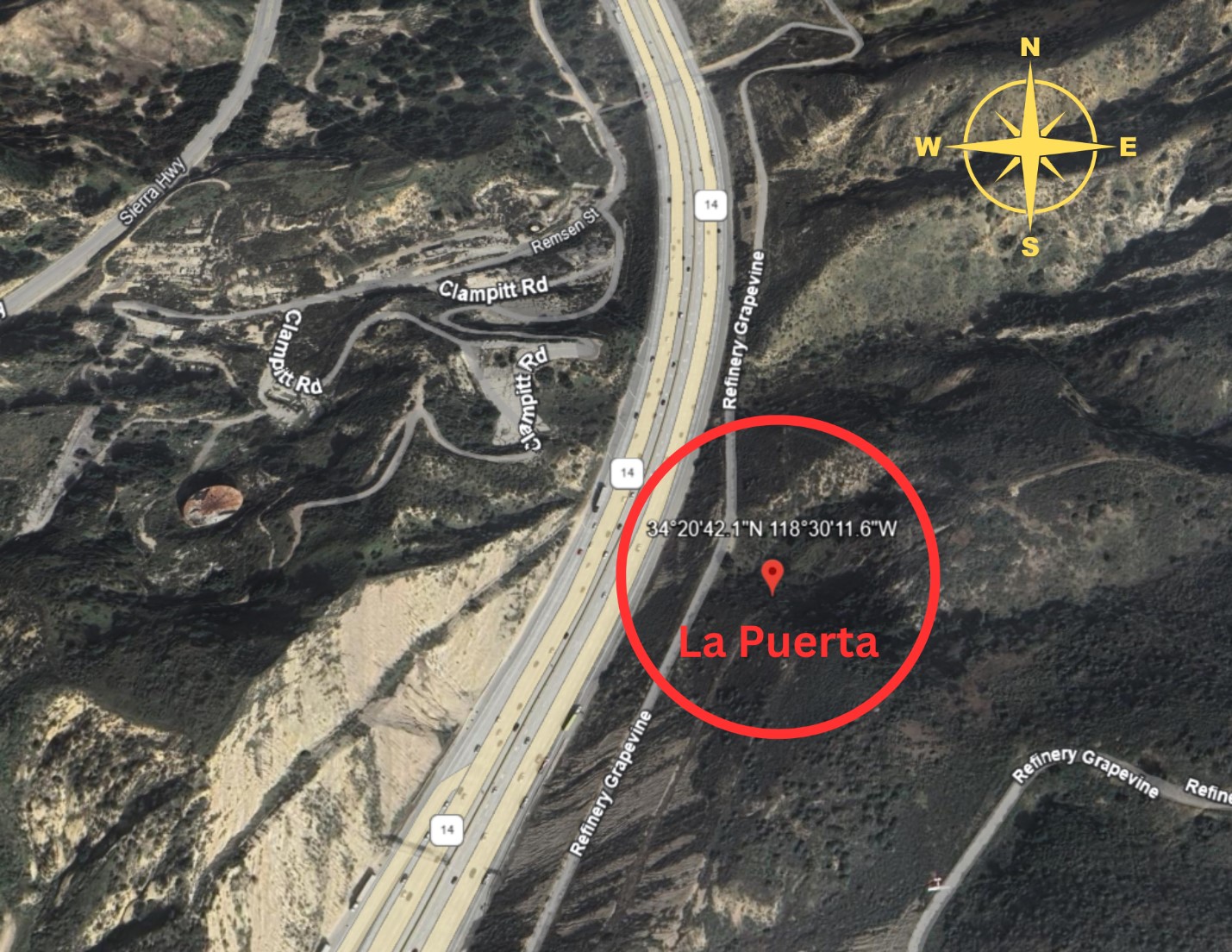 La Puerta, "The Door", or El Camino Viejo, "The Old Road", located in Santa Clarita, is a narrow pass that served as the confluence of the San Gabriel Mountains to the east, and Santa Susana Mountains to the west, through Elsmere Canyon. La Puerta functioned as a natural gateway through the rugged terrain of the region, originally serving as a footpath between indigenous villages on both sides of the San Gabriel Mountains. During the Spanish period, a bar was placed across a narrow defile along the trail to create a gate, La Puerta. In January 1847, Col. John C. Fremont led his troops through La Puerta, en route to accepting the Mexican army's surrender at the Capitulation of Cahuenga.
La Puerta, "The Door", or El Camino Viejo, "The Old Road", located in Santa Clarita, is a narrow pass that served as the confluence of the San Gabriel Mountains to the east, and Santa Susana Mountains to the west, through Elsmere Canyon. La Puerta functioned as a natural gateway through the rugged terrain of the region, originally serving as a footpath between indigenous villages on both sides of the San Gabriel Mountains. During the Spanish period, a bar was placed across a narrow defile along the trail to create a gate, La Puerta. In January 1847, Col. John C. Fremont led his troops through La Puerta, en route to accepting the Mexican army's surrender at the Capitulation of Cahuenga.
November 7, 2025 SHRC Meeting
 Wintersburg, a historic district on approximately four and a half acres in Huntington Beach, represents the surviving remnant of the former farming community of Wintersburg historically associated with Japanese settlement in the area in the early twentieth century and after World War II, and meets the registration requirements for Asian Americans and Pacific Islanders in California, 1850-1995, in the context of Migration and Community Formation. Contributing buildings include the Spanish Colonial Revival style Japanese Presbyterian Church of Wintersburg, constructed in 1934, and three buildings associated with the C.M. Furuta farm that previously occupied the property—the Craftsman style Furuta House #1 and adjacent Furuta Barn, both constructed in 1912, and the Minimal Traditional style Furuta House #2, constructed in 1947.
Wintersburg, a historic district on approximately four and a half acres in Huntington Beach, represents the surviving remnant of the former farming community of Wintersburg historically associated with Japanese settlement in the area in the early twentieth century and after World War II, and meets the registration requirements for Asian Americans and Pacific Islanders in California, 1850-1995, in the context of Migration and Community Formation. Contributing buildings include the Spanish Colonial Revival style Japanese Presbyterian Church of Wintersburg, constructed in 1934, and three buildings associated with the C.M. Furuta farm that previously occupied the property—the Craftsman style Furuta House #1 and adjacent Furuta Barn, both constructed in 1912, and the Minimal Traditional style Furuta House #2, constructed in 1947.
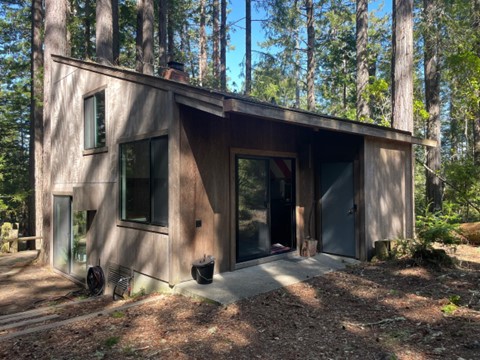 Mini-Mod 3, located in The Sea Ranch, a master-planned community on the coast of unincorporated Sonoma County, is a split three-level residence surrounded by redwood trees. Representing the local Third Bay Tradition of Modern architecture with its simple cubic form, unpainted wood exterior finishes, and complex interior volumetric plan, the property embodies the principles that informed the early phase of planning and design of residences and other facilities at The Sea Ranch during the mid- and late-1960s, realized at a relatively small and economical scale.
Mini-Mod 3, located in The Sea Ranch, a master-planned community on the coast of unincorporated Sonoma County, is a split three-level residence surrounded by redwood trees. Representing the local Third Bay Tradition of Modern architecture with its simple cubic form, unpainted wood exterior finishes, and complex interior volumetric plan, the property embodies the principles that informed the early phase of planning and design of residences and other facilities at The Sea Ranch during the mid- and late-1960s, realized at a relatively small and economical scale.
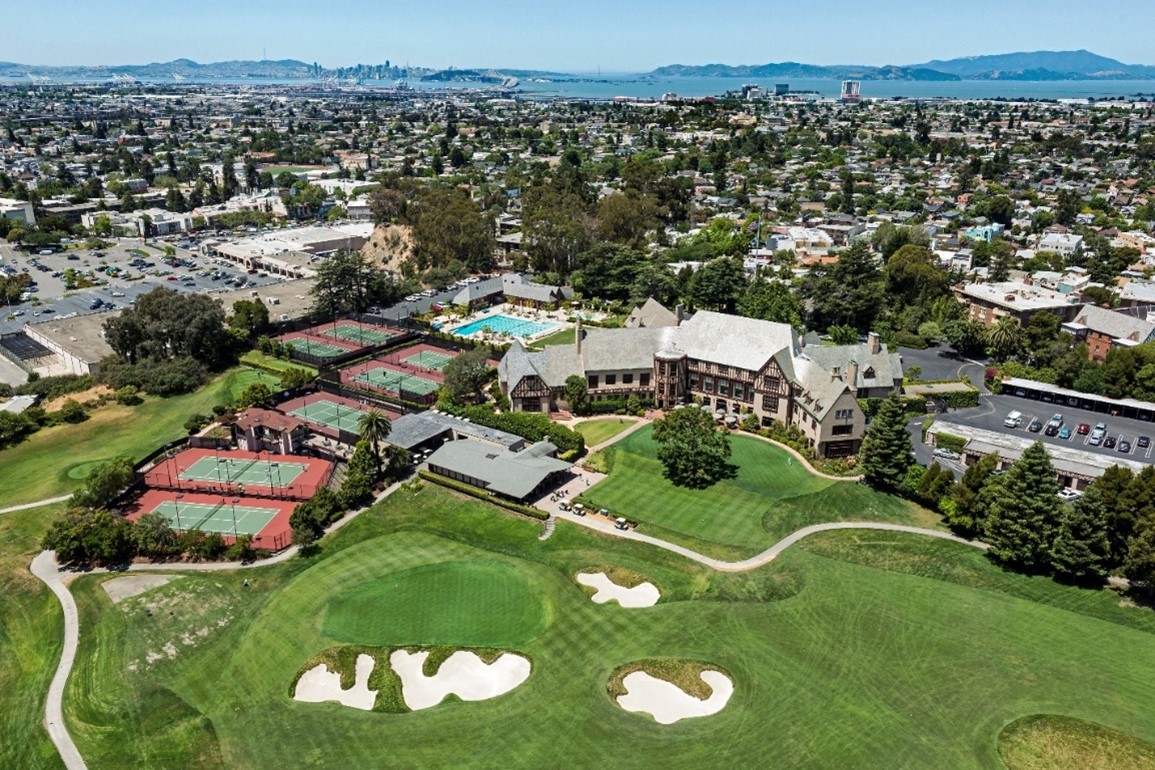 Claremont Country Club in Oakland occupies approximately 120 acres set amongst the largely residential rolling hills of the Rockridge neighborhood, historically known as Rock Ridge. After the first nine holes opened in 1904, with an additional nine holes constructed in 1909, the eighteen-hole course was redesigned in 1927 by Alister MacKenzie. The property is significant for its association with the early recreational history of golf on the West Coast as one of Oakland’s earliest and longest lasting recreational clubs, for the design of its golf course by famed golf course architect Alister MacKenzie, and for the design of its Tudor Revival buildings that are excellent local examples of the style.
Claremont Country Club in Oakland occupies approximately 120 acres set amongst the largely residential rolling hills of the Rockridge neighborhood, historically known as Rock Ridge. After the first nine holes opened in 1904, with an additional nine holes constructed in 1909, the eighteen-hole course was redesigned in 1927 by Alister MacKenzie. The property is significant for its association with the early recreational history of golf on the West Coast as one of Oakland’s earliest and longest lasting recreational clubs, for the design of its golf course by famed golf course architect Alister MacKenzie, and for the design of its Tudor Revival buildings that are excellent local examples of the style.
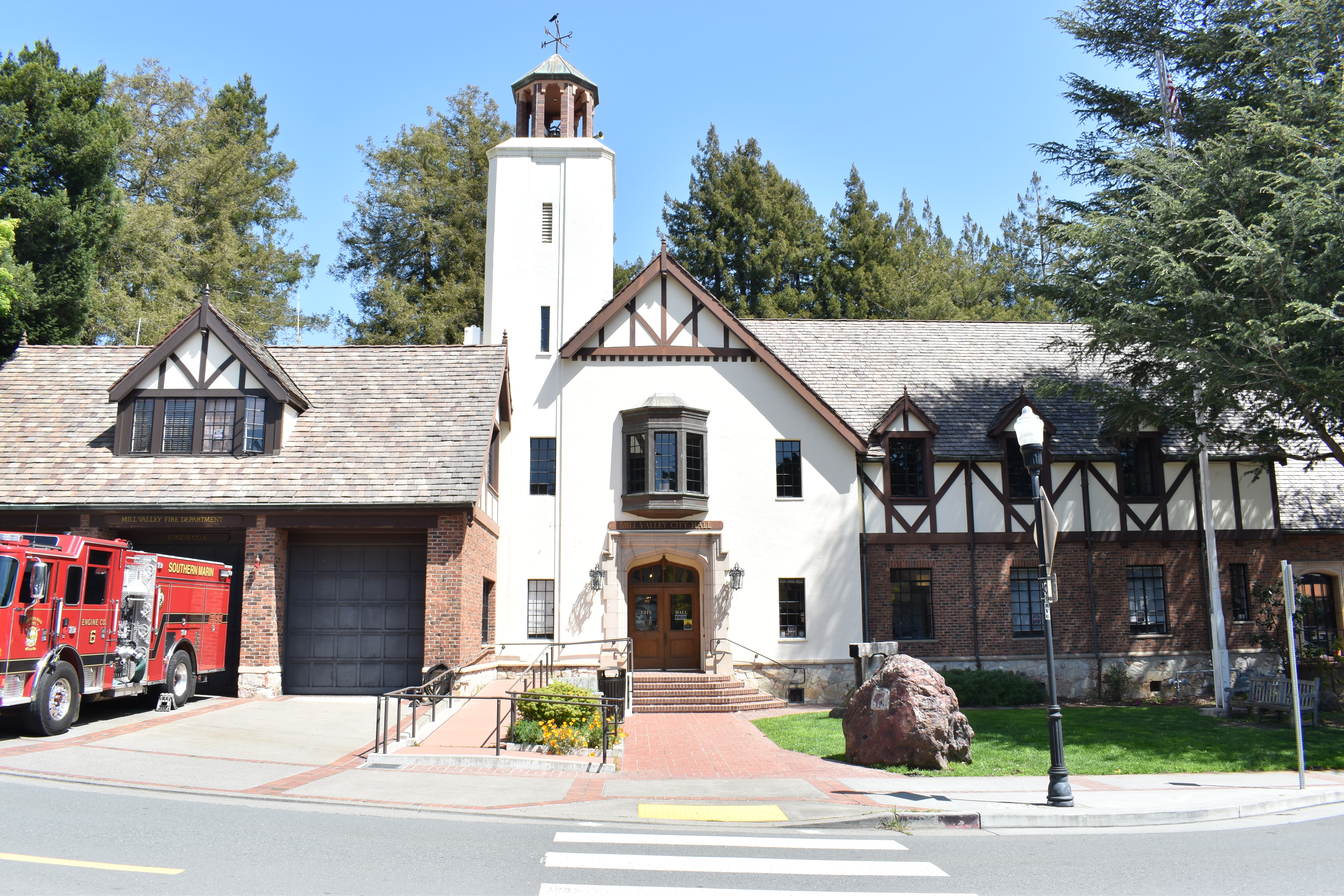
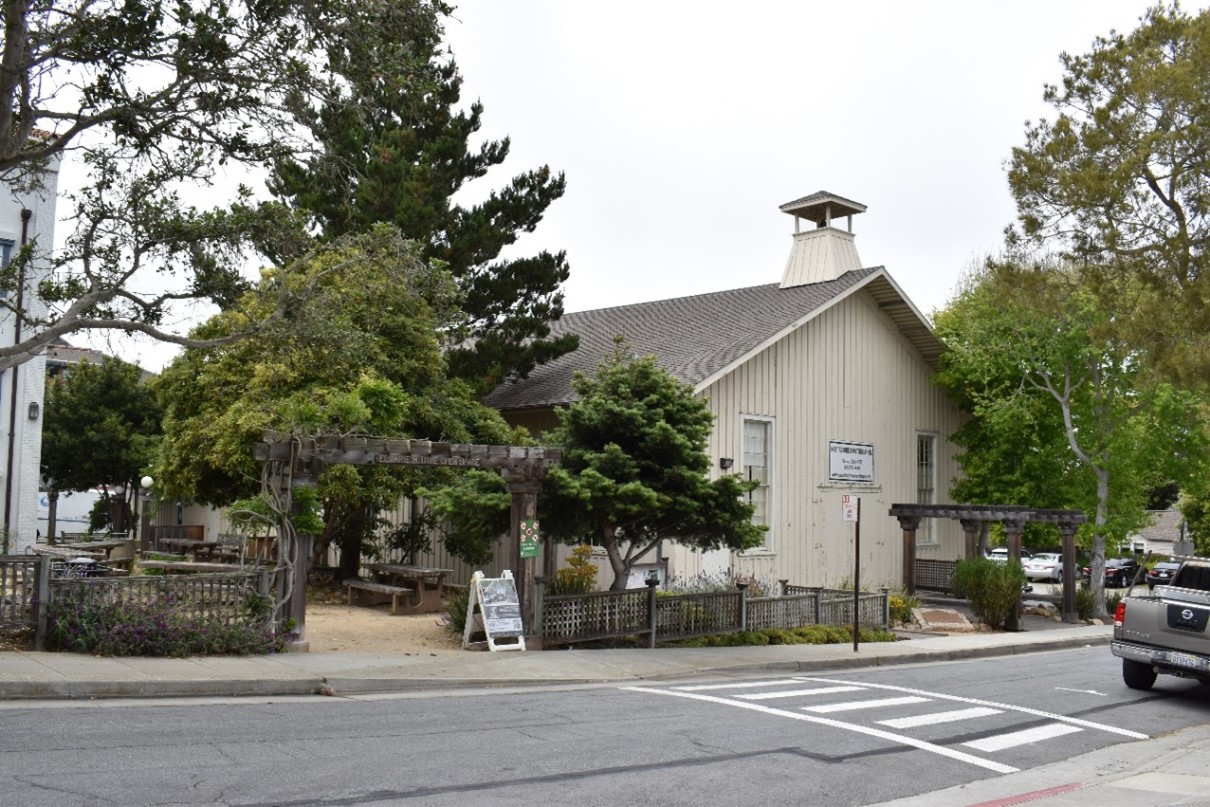
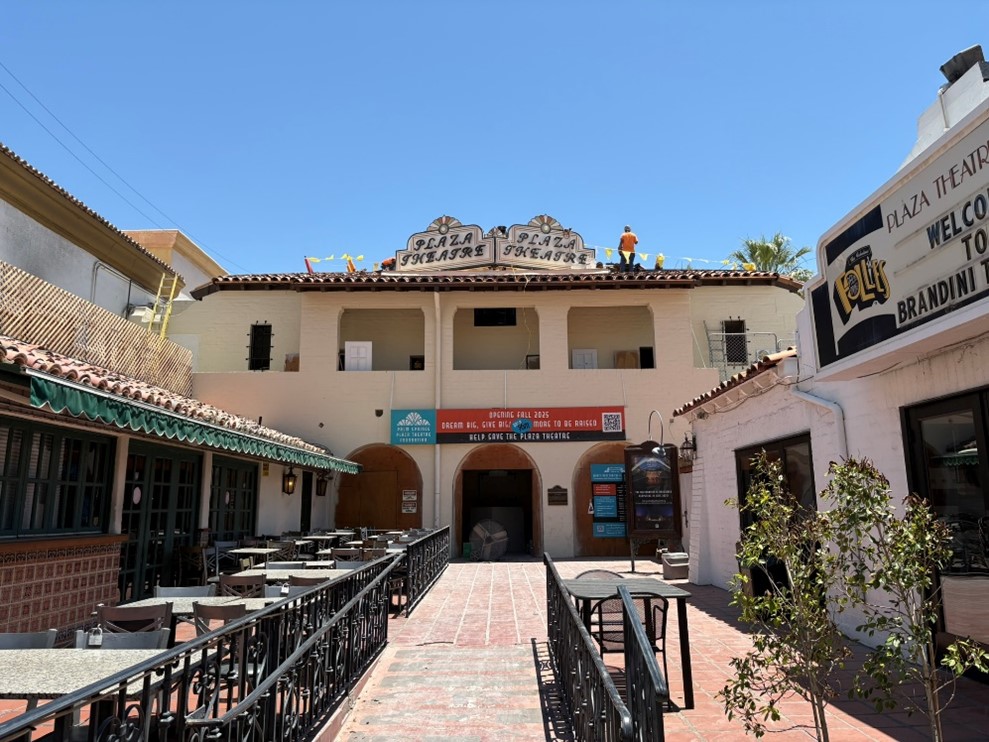 Plaza Theatre in downtown Palm Springs, was designed by architect Harry J. Williams and constructed in 1936. The building is an excellent example of a 1930s Spanish Colonial Revival atmospheric theater and is associated with the early twentieth century commercial development of Palm Springs. A venue for star-studded charity events and benefit shows, live theater and variety show performances, and several live-audience radio show recordings, the building is undergoing rehabilitation for use as a performing arts and motion picture theater, expected to be completed in October 2025.
Plaza Theatre in downtown Palm Springs, was designed by architect Harry J. Williams and constructed in 1936. The building is an excellent example of a 1930s Spanish Colonial Revival atmospheric theater and is associated with the early twentieth century commercial development of Palm Springs. A venue for star-studded charity events and benefit shows, live theater and variety show performances, and several live-audience radio show recordings, the building is undergoing rehabilitation for use as a performing arts and motion picture theater, expected to be completed in October 2025.
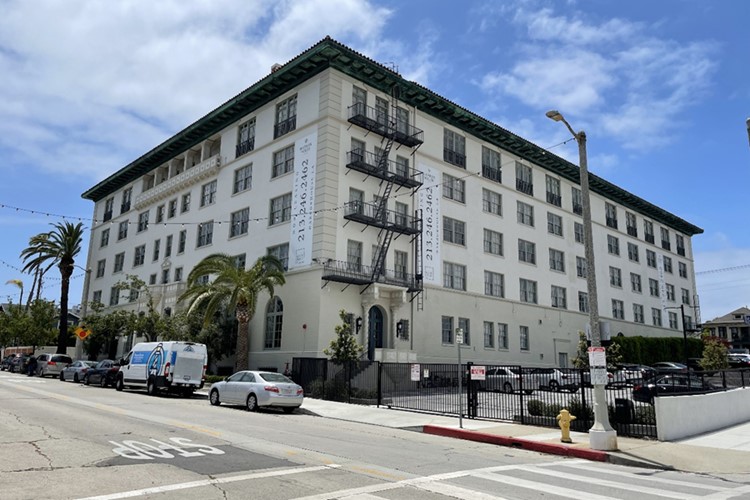 Army and Navy YMCA was designed in the Mediterranean Revival style by Los Angeles architects Jay, Rogers & Stevens and constructed in 1926. The building has a rectangular plan around a central courtyard. Because of its large size, quality design, and prominent location on the Main Channel of the Port of Los Angeles, the building remains a strong visual architectural landmark in the San Pedro community of the City of Los Angeles. The property is associated with the expansion of the Young Men’s Christian Association throughout the United States in the post-World War I era, with the growth of the organization’s services targeted to military personnel, and with the growing importance of San Pedro as a military base and naval port between the two World Wars.
Army and Navy YMCA was designed in the Mediterranean Revival style by Los Angeles architects Jay, Rogers & Stevens and constructed in 1926. The building has a rectangular plan around a central courtyard. Because of its large size, quality design, and prominent location on the Main Channel of the Port of Los Angeles, the building remains a strong visual architectural landmark in the San Pedro community of the City of Los Angeles. The property is associated with the expansion of the Young Men’s Christian Association throughout the United States in the post-World War I era, with the growth of the organization’s services targeted to military personnel, and with the growing importance of San Pedro as a military base and naval port between the two World Wars.
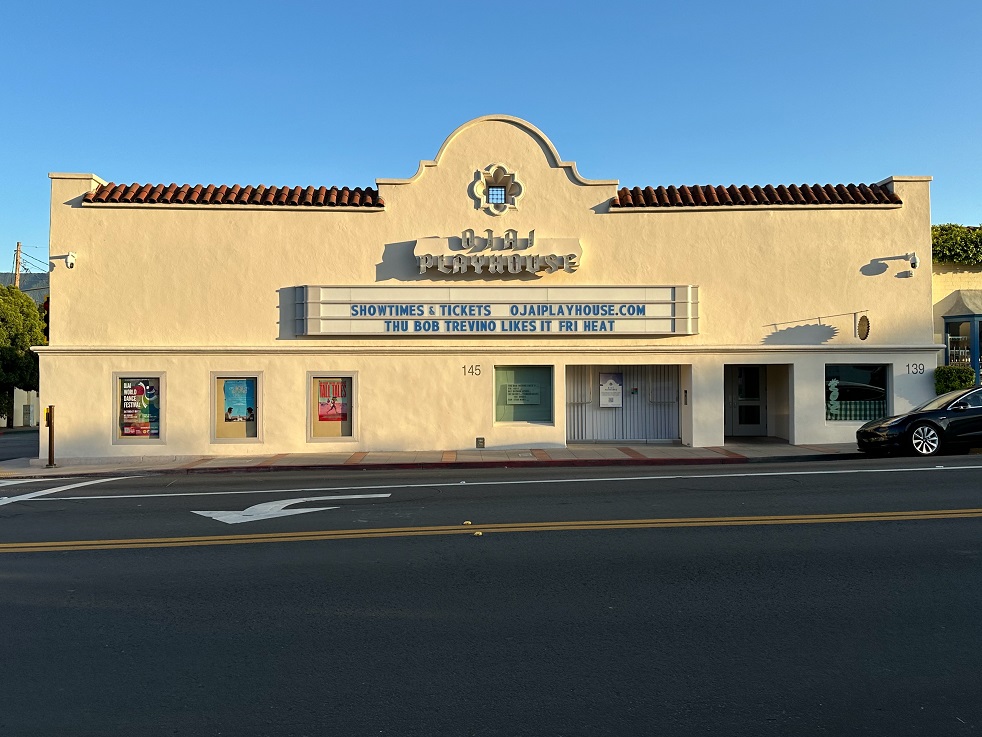 Isis Theater, located in Ojai, Ventura County, is a Mission Revival style storefront movie theater built in 1914 by early settler J.J. Burke, with a 1917 facade re-done by the firm of Mead and Requa. Used for films as well as vaudeville, musical performances, lectures, and newsreels. In 1926 the theater was purchased by Fred and Lida Hart, who were involved in the Theosophy movement, not long after the Theosophical Society had relocated their "Krotona" colony to Ojai. Leaders of the Society frequently attended the theater, and gave lectures there. The theater operated intermittently from 1930-1935 due to the Great Depression, when it was sold to Bill Swanson, who ran the theater through the Depression and World War II.
Isis Theater, located in Ojai, Ventura County, is a Mission Revival style storefront movie theater built in 1914 by early settler J.J. Burke, with a 1917 facade re-done by the firm of Mead and Requa. Used for films as well as vaudeville, musical performances, lectures, and newsreels. In 1926 the theater was purchased by Fred and Lida Hart, who were involved in the Theosophy movement, not long after the Theosophical Society had relocated their "Krotona" colony to Ojai. Leaders of the Society frequently attended the theater, and gave lectures there. The theater operated intermittently from 1930-1935 due to the Great Depression, when it was sold to Bill Swanson, who ran the theater through the Depression and World War II.
 Pence Hotel is located in Butte County near Oroville, and is the only surviving building of the agricultural community of Pence, or Pentz, california. Built in 1901 after its predecessor burned down, this two-and-a-half story, wooden vernacular building was moved in the early 2000s to prevent its demolition. In addition to its role as a hotel, the building served as a Rural Free Delivery (RFD) post office.
Pence Hotel is located in Butte County near Oroville, and is the only surviving building of the agricultural community of Pence, or Pentz, california. Built in 1901 after its predecessor burned down, this two-and-a-half story, wooden vernacular building was moved in the early 2000s to prevent its demolition. In addition to its role as a hotel, the building served as a Rural Free Delivery (RFD) post office.
 Dodd & Associates Offices (African Americans in California MPS) is a two-story office building built in 1971 and designed by Sacramento's first African American architect, James Dodd, for use as his own architecture office. The building is directly associated with Dodd due to its use as his office during the peak of his architectural career, and is a significant example of his work as an architect. It was designed to suit his needs as an architect, as well as the compact urban site where the building is located.
Dodd & Associates Offices (African Americans in California MPS) is a two-story office building built in 1971 and designed by Sacramento's first African American architect, James Dodd, for use as his own architecture office. The building is directly associated with Dodd due to its use as his office during the peak of his architectural career, and is a significant example of his work as an architect. It was designed to suit his needs as an architect, as well as the compact urban site where the building is located.
Properties nominated as California Historical Landmarks
 Three Princes’ Surf Site is located at the San Lorenzo Rivermouth, a surf break in Santa Cruz. The break is formed by the confluence of the San Lorenzo River and the northern water’s edge and shoreline of Monterey Bay, bounded in part to the west by Santa Cruz Main Beach (City of Santa Cruz) and to the east by Seabright State Beach (California State Parks). The site was the original location that surfing, as practiced by Native Hawaiian peoples, standing erect on a wooden board, was introduced to the continental United States in July 1885. Surfing caught on amongst Americans in Santa Cruz and has become strongly associated with the city and region. Santa Cruz has been designated as one of the most unique surf locations in the world based in part on this history.
Three Princes’ Surf Site is located at the San Lorenzo Rivermouth, a surf break in Santa Cruz. The break is formed by the confluence of the San Lorenzo River and the northern water’s edge and shoreline of Monterey Bay, bounded in part to the west by Santa Cruz Main Beach (City of Santa Cruz) and to the east by Seabright State Beach (California State Parks). The site was the original location that surfing, as practiced by Native Hawaiian peoples, standing erect on a wooden board, was introduced to the continental United States in July 1885. Surfing caught on amongst Americans in Santa Cruz and has become strongly associated with the city and region. Santa Cruz has been designated as one of the most unique surf locations in the world based in part on this history.

_looking west.JPG)
